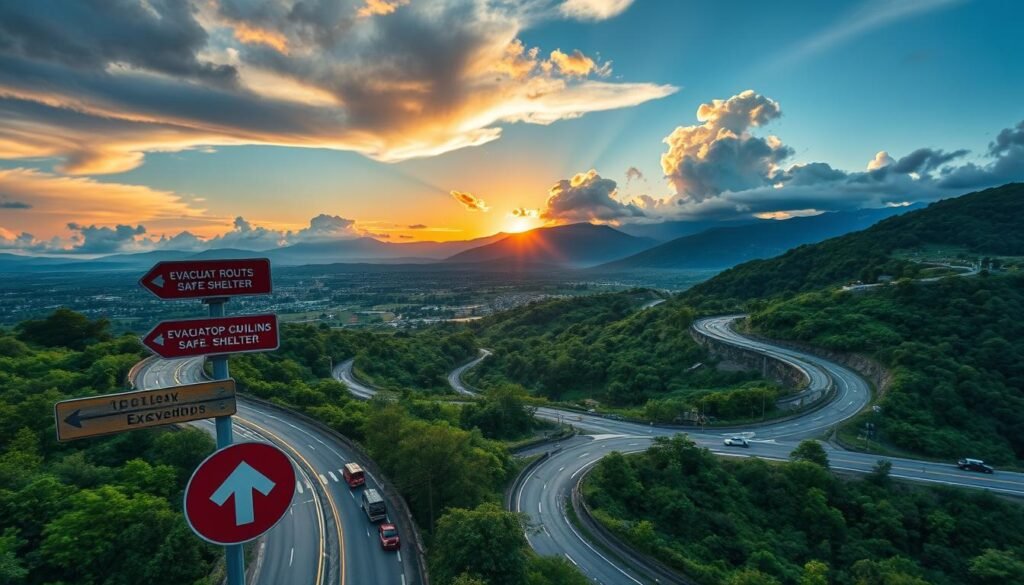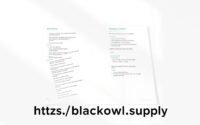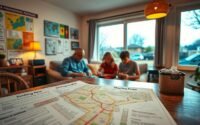Prepare for Natural Disasters: Fire, Hurricane, Flood, Earthquake
What would you grab first if a sudden disaster hit your neighborhood tonight?
Clear planning and calm action make a huge difference when a disaster arrives. Each year in the United States, storms, wildfires, tornadoes, droughts, and quakes cause major losses and stress. A family-focused approach—simple steps, key supplies, and clear roles—helps you protect loved ones fast.
You’ll learn how to assess your area risks, build a practical plan, and stock the must-have items in one easy guide. This blog stays updated with plain-English information so you can act quickly and keep kits current.
Use this resource to set up checklists, templates, and quick rules for sheltering, evacuation, and communication. With a few smart moves now, you make sure your home and family are ready when time is short.
Key Takeaways
- Take simple, step-by-step actions to protect your family at home and on the go.
- Learn how to assess your area’s risks and build a clear emergency plan.
- Know which supplies to stock and how to rotate them for freshness.
- Find household tips for children, older adults, people with disabilities, and pets.
- Understand alerts, watch vs. warning, and where to get trustworthy information fast.
Why Family-Centered Planning Matters Right Now
Start by mapping local hazards so your household knows when seasons raise risks and what to watch for.
Understanding your local risks and seasonality in the United States
Hurricanes rise in summer and fall along coastal zones. Floods are the most common U.S. natural disaster and can turn deadly fast; six inches of moving water can knock you down, and two feet can sweep a car away.
Tornado threats peak in the Midwest and Southeast. Earthquakes can affect as many as 45 states, so many communities must plan even if quakes feel unlikely.
Take planning seriously: how proper consideration saves lives and reduces losses
You’ll map hazards by ZIP code and elevation to see where water could rise and where winds funnel. That simple step helps prioritize actions before an emergency begins.
- Learn to read watches and warnings and use NOAA Weather Radio or the FEMA app for timely information.
- Run short, realistic drills with your family so decisions become second nature under stress.
- Document medical needs, mobility limits, and pet items now so the plan fits everyone.
- Set calendar reminders to review gear and roles twice a year and keep printed and digital copies of your plan.
Bookmark this guide — we update it regularly with new checklists and tips so you can make sure your household stays ready.
Your Household Readiness Framework: Plan, Supplies, Communication
Answering three key questions now reduces confusion and speeds action during an emergency.
Three essentials: How will you receive alerts? Where will you shelter? What is your evacuation route? These three answers form the backbone of your plan and guide every choice you make.
Assign roles and cover special needs
Give each family member a clear job: one grabs the kit, one manages pets, one readies the car, and one confirms a primary contact. Include items for each person—medicines, mobility aids, and power backups for medical devices.
Set contacts, meet-up spots, and review dates
Pick an out-of-area contact and a text-first rule so messages get through when networks strain. Define two meet-up places: one near home and one outside the neighborhood. Create a laminated card and a phone note with the same details.
- Review and update your plan every six months and after any nearby incidents.
- Bookmark this guide to revisit new templates, checklists, and tips to make sure your family stays ready for disasters.
Build Your Emergency Kit for at Least Three Days
A well-stocked emergency kit gives your household essentials to last through the first 72 hours.
Water and food basics: Pack at least one gallon of water per person per day for three days. Store water in sturdy, labeled containers you can rotate easily.
Choose calorie-dense, nonperishable food your family actually eats — canned proteins, ready-to-eat meals, and shelf-stable snacks. Add a manual can opener and a mess kit.
Power, tools, and hygiene
Include a NOAA Weather Radio (hand-crank or battery), flashlights or headlamps, spare batteries, and power banks. Add a first aid kit, basic tools, whistle, and a fire extinguisher.
Pack sanitation items: soap, disinfecting wipes, garbage bags, and towelettes. Add dust masks, plastic sheeting, and duct tape for temporary sheltering needs.
Documents, special needs, and maintenance
Store IDs, insurance, and banking records in waterproof pouches. Carry cash and backup chargers. Keep prescription lists and copies of prescriptions to speed refills if you relocate.
Cover infants, older adults, people with disabilities, and pets: formula, diapers, medical supplies, mobility aids, pet food, carrier, and leash. Store the kit where you can grab it and set an annual review date.
| Category | Key items | Quantity | Notes |
|---|---|---|---|
| Hydration & Food | Water, canned food, manual can opener | 3 days per person | Rotate water and canned goods annually |
| Health & Safety | First aid kit, meds, masks, extinguisher | Per person | List dosages and doctor contacts |
| Power & Tools | NOAA radio, flashlights, power bank | 1+ each | Test radios and charge banks every 6 months |
| Documents & Extras | Waterproof IDs, cash, maps, pet kit | 1 set | Keep checklist on top of bin with last rotation date |
Create a Family Communications and Contact Plan
Set up a short, easy-to-follow messaging plan so updates travel fast when every minute counts.
Start with names and numbers. Every person in your household should have each other’s phone numbers and an out-of-area contact saved. Add daycare, school, and work addresses and phone numbers so reunification runs smoothly.
Primary, out-of-area, and backup contacts
Choose one in-town contact and one out-of-area contact. Texts usually go through faster than calls during an emergency, so use a text-first rule.
“We’re safe at [place], heading to [second location], ETA 30 min.”
Meet-up places and printable wallet cards
Pick two meet-up spots: one near home and one across town. Write step-by-step directions a child or older adult can follow.
Create printable wallet cards and a lock-screen note with key numbers and your out-of-area contact. Keep a paper copy in your kit and a digital copy on each phone.
- Write a short text script everyone copies under stress.
- Document pickup rules and authorized adults for daycare and school.
- Add a mini communications kit to your go-bag: charger, battery bank, car adapter, and a paper contact list.
- Run regular drills where each person sends the group text and calls the out-of-area contact.
Finally, make sure caregivers, neighbors, and close friends have a copy of your plan and know the meet-up details. In case you’re separated, clear roles and simple messages help you reconnect fast.
Preparedness for Fires, Hurricanes, Floods, and Earthquakes
Quick, household-sized steps can cut chaos when smoke, high winds, rising water, or sudden shaking strike.
House fire readiness
Test smoke alarms monthly and keep a fire extinguisher on every level. Mark two exits in each room and run short home drills so everyone knows how to reach shelter outside fast.
Hurricane actions and timing
Use the FEMA app or NOAA alerts. A watch means possible in 48 hours; a warning means expected in 36 hours. Bring outdoor items inside, close storm shutters or board windows, and pick an interior safe room if you shelter instead of evacuating.
Flood safety
A watch tells you to be aware; a warning tells you to act. Move to higher ground, avoid walking or driving through water, and only turn off gas or electricity if officials advise. Keep extra water and charged devices handy.
Earthquake steps
Indoors, drop, cover, and hold on. Outdoors, move away from buildings. Expect aftershocks and check for hazards. In every case, document who does what in your family so actions happen fast when the rain, winds, or shaking begin.
Evacuation Made Safer: Routes, Timing, Vehicles, and Shelter Options
Deciding to leave early can be the single best move you make when forecasts show rising risk.
Go early: leave before roads and weather force your hand
Choose to go early to avoid heavy traffic, road closures, and driving in high water. Leaving ahead of peak winds or heavy rain gives you safe options and reduces stress.
Know routes and where you’ll stay
Pick two evacuation routes and one out-of-town place to stay: a public shelter, hotel, or a trusted friend or family home. Save directions offline and write them on a card.

Vehicle readiness and packing
Keep routine checks on tires, oil, and brakes and maintain at least half a tank of gas. Pre-pack your go-bag with water, medicines, documents, and the emergency kit so you can leave fast.
Helping relatives and neighbors
Coordinate rides if you lack a car. Share your route and ETA with an out-of-area contact and set simple check-in times. Plan for kids, older adults, and pets so no one gets left behind.
- Load items in order: kit first, documents, medications, pet carrier.
- List backup routes and where to find fuel and charging stations along the way.
- Keep a roadside aid list with towing numbers and local resources in case you need help.
Hardening Your Home Against Wind, Water, Fire, and Shaking
Small upgrades protect people and speed recovery. A focused approach to the building envelope and utilities reduces damage and keeps your family safer after a storm or quake.
Wind and storm upgrades
Brace garage doors, add roof clips or straps, and install permanent storm shutters or impact-rated windows to cut wind-driven damage. Caulk and weather-strip around doors and windows to slow water intrusion.
Reduce flooding and water loss
Seal basement walls, repair foundation cracks, and install a sump pump with battery backup. Elevate the water heater, washer, dryer, furnace, and key electrical components at least 12 inches above expected flood levels.
Install backflow valves to limit sewage intrusion and keep a wet/dry vac and basic water-damage supplies on hand for quick response.
Earthquake retrofits
Bolt the house to its foundation and strap water heaters and heavy appliances. Anchor tall furniture to studs and move breakables to lower shelves to cut injury risk during shaking.
Wildfire-resistant actions
Choose noncombustible roofing and fiber cement or stucco siding. Maintain a 30-foot clear zone, keep gutters and roofs clean, and keep a long hose ready so you can protect the perimeter fast.
Insurance and recovery steps
Review your insurance to confirm wind and NFIP flood coverage if you live in a mapped zone. Photograph rooms, serial numbers, and receipts, then back images to the cloud so claims move faster.
- Label utility shutoffs and teach adults how to turn off gas and electricity safely.
- Schedule seasonal walk-arounds to spot loose shingles, cracked seals, or leaning fences.
- Stage repair supplies—tarps, plastic sheeting, duct tape, and fasteners—so you can make temporary fixes if it’s safe to do so.
| Hazard | Key upgrade | Family benefit |
|---|---|---|
| Wind | Garage bracing, shutters, roof straps | Less debris, safer exit routes |
| Water | Sump pump (battery), elevated utilities | Faster recovery, reduced mold risk |
| Quake | Foundation bolting, appliance strapping | Fewer injuries, less structural damage |
Downloadable Templates and Checklists for Your Family
Download ready-to-print templates that put every essential item and contact on one page.
Practical, printable tools help you organize what to grab at home, in the car, or at work. Each sheet lists core items: one gallon of water per person per day for three days, nonperishable food, medications, pet supplies, a NOAA Weather Radio, flashlights and batteries, a first aid kit, important documents, cash, and sanitation supplies.
Emergency kit checklist by person and location
Use the master checklist to assign kit items to each person and to each place (home, car, work). The printable separates supplies so you can rotate water and food quickly.
Family communications card and contact sheet
Fill a one-page card with primary and out-of-area contacts, workplace and school details, and two meet-up places. Add QR codes to store digital copies of IDs and insurance.
Evacuation map and go-bag template
Print an evacuation route map with two exit routes, pet-friendly stays, and shelter options. Use the go-bag template that prioritizes documents, meds, chargers, water, and food to speed loading.
| Template | Includes | Use case | Benefit |
|---|---|---|---|
| Master kit checklist | Water, food, meds, pet kit, radio | Home / Car / Work | Fast inventory & rotation |
| First aid guide | Bandages, meds list, replenishment tracker | Personal & household | Restock after drills |
| Communications card | Contacts, meet-up places, QR IDs | Wallet & kit | Quick contact sharing |
| Evacuation & case log | Routes, shelters, receipts, times | Evacuation event | Simplifies claims later |
Bookmark this page and revisit often — we update these templates so your plan stays current and your supplies stay fresh.
Conclusion
Small, regular actions make a big difference when emergency warnings hit your area.
Take simple steps now: store one gallon of water per person per day for at least three days, keep fuel topped, and refresh key supplies on a schedule. Know the difference between a watch and a warning and never enter moving floodwater.
Practice short drills with your family, use shutters or an interior room during high winds, and drop, cover, and hold on if shaking starts. Harden your home with straps, a sump pump, and clear defensible space. Review flood insurance and photo-document your belongings to speed recovery aid.
Bookmark this guide and revisit it often — we update templates and checklists so you and your household stay ready when a disaster arrives.
FAQ
How do I assess the specific hazards in my area?
Start with your city or county emergency management website and the National Weather Service to learn common threats like wildfires, hurricanes, floods, or earthquakes. Check FEMA maps for flood zones and the USGS for seismic risk. Talk with neighbors and local first responders to understand seasonality, evacuation routes, and shelter locations.
What are the three most important questions to answer when making a family plan?
Decide where you will meet if separated, who is your out‑of‑area contact, and how each person will evacuate or shelter in place. Make sure roles cover children, seniors, those with disabilities, and pets. Keep answers simple and accessible to everyone in your household.
How much water and food should I include in my emergency kit per person?
Aim for at least three days of supplies. Store one gallon of water per person per day and nonperishable food that needs no cooking or refrigeration. Rotate items annually and include a manual can opener, special‑diet foods, and infant or senior needs.
What electronics and power items should be in my kit?
Pack a NOAA weather radio, a battery‑operated or hand‑crank radio, LED flashlights with extra batteries, and portable chargers (power banks). Keep backup charging cables and a solar charger or battery pack if you expect long outages.
How do I create a communications plan that actually works?
Choose a text‑first protocol since texts often go through when calls fail. List primary and out‑of‑area contacts, include cell and landline numbers, and add meeting points. Print wallet cards and store digital copies in cloud storage everyone can access.
When should I evacuate versus shelter in place for a hurricane or wildfire?
Evacuate when authorities order mandatory evacuation or if you are in a flood zone, low‑lying area, or near a fast‑moving fire. Shelter in place if you’re in a designated safe room, have robust shutters, and officials advise staying put. Always follow local emergency alerts and don’t wait until roads are unsafe.
What simple home upgrades reduce damage from wind and storms?
Install storm shutters or impact‑rated windows, reinforce garage doors, add roof straps or hurricane clips, and secure loose outdoor items. Trim trees and remove dead branches. These steps lower the chance of structural damage during high winds.
How do I protect my home from flood damage?
Move valuables above expected flood heights, install sump pumps with battery backup, seal basement walls, and consider flood vents. Purchase flood insurance through the National Flood Insurance Program (NFIP) if you’re in a flood zone—standard homeowners policies rarely cover flooding.
What should I do during and immediately after an earthquake?
During shaking, drop, cover, and hold on beneath sturdy furniture. Stay indoors until shaking stops and it’s safe to exit. Afterward, expect aftershocks, check for gas leaks, turn off utilities if damaged, and follow local guidance before reentering unsafe structures.
How can I make evacuation easier for older adults, children, and pets?
Prepare tailored kits: medications, mobility aids, medical records, formula, diapers, and pet food with carriers. Assign specific helpers and practice evacuation routes. Keep copies of prescriptions and important documents in a waterproof folder and cloud backups.
What documents and financial items should I store in my kit?
Include insurance policies, identification, medical records, recent photos of your home, bank account info, and a list of emergency contacts. Keep cash in small bills, a backup credit card, and USB drives with scanned documents stored securely.
How often should I review and update my emergency kits and plan?
Revisit your plan and supplies at least once a year and after major life changes—moving, new pets, or medical needs. Rotate food, water, and batteries before they expire. Update contact lists, medication info, and insurance documents regularly.
What are the best ways to help neighbors and relatives during an evacuation?
Coordinate rides and meeting points in advance. Share your routes and shelter plans, check on those with mobility or cognitive challenges, and exchange keys or access info if needed. Keep lines of communication open and offer temporary space if you can safely do so.
Do I need special supplies for infants or people with disabilities?
Yes. Pack formula, bottles, diapers, baby medicine, mobility devices, extra batteries for medical equipment, oxygen supplies if needed, and copies of medical orders. Include caregivers’ contact info and clear instructions for care in your kit.
Is flood insurance worth the cost if I don’t live in a floodplain?
Flooding can occur outside mapped zones. If you live near rivers, coasts, or low elevations, review your risk. Flood insurance through NFIP can protect against costly repairs—consider it if you want financial protection beyond standard homeowners policies.
Where can I download checklists and family plan templates?
Look to FEMA, the American Red Cross, and local emergency management offices for printable checklists, go‑bag templates, and family communications cards. Save templates to your phone and print wallet cards for each household member.


